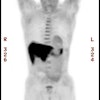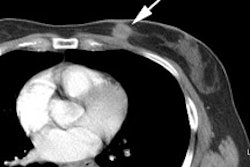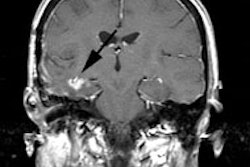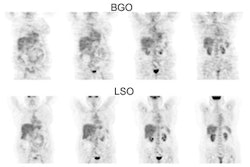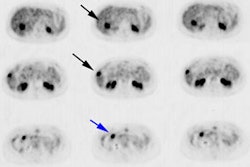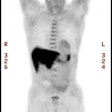Cho SM, Ha HK, Byun JY, Lee JM, Kim CJ, Nam-Koong SE, Lee JM.
OBJECTIVE: The purpose of our study was to evaluate the diagnostic accuracy of FDG positron emission tomography (PET) in comparison with CT in detecting recurrent ovarian carcinoma and its ability to reveal small tumor recurrence. MATERIALS AND METHODS: We reviewed the records of 31 consecutive patients with pathologically proven epithelial carcinoma who underwent FDG PET 1 month before second-look surgery to assess recurrent tumor. Of these 31 patients, 21 patients also underwent CT 1 month before second-look surgery. The diagnostic accuracies of FDG PET (n = 31), CT (n = 21), and combined FDG PET and CT (n = 21) in detecting recurrent tumor were calculated and compared with each other using the Bennett's test in 21 patients who underwent both imaging studies. Detection rates of individual tumors relative to their sizes were compared between FDG PET and CT using the McNemar test. RESULTS: The sensitivity, specificity, and accuracy of FDG PET, CT, and combined FDG PET and CT for revealing recurrent ovarian cancer were 45.3%, 99.7%, 91.0%; 54.5%, 99.6%, 91.7%; 58.2%, 99.6%, 92.4%, respectively. We found no statistically significant difference in the diagnostic accuracy of FDG PET, CT, and combined FDG PET and CT (chi(2) < 5.991). Detection rates of tumor nodules found on CT were significantly greater than those on FDG PET when nodule size was 0.3-0.7 cm (p < 0.05). CONCLUSION: FDG PET did not improve the overall diagnostic accuracy in detecting recurrent ovarian carcinoma compared with CT. Rather, FDG PET was inferior to CT in its ability to reveal small-tumor recurrence.
